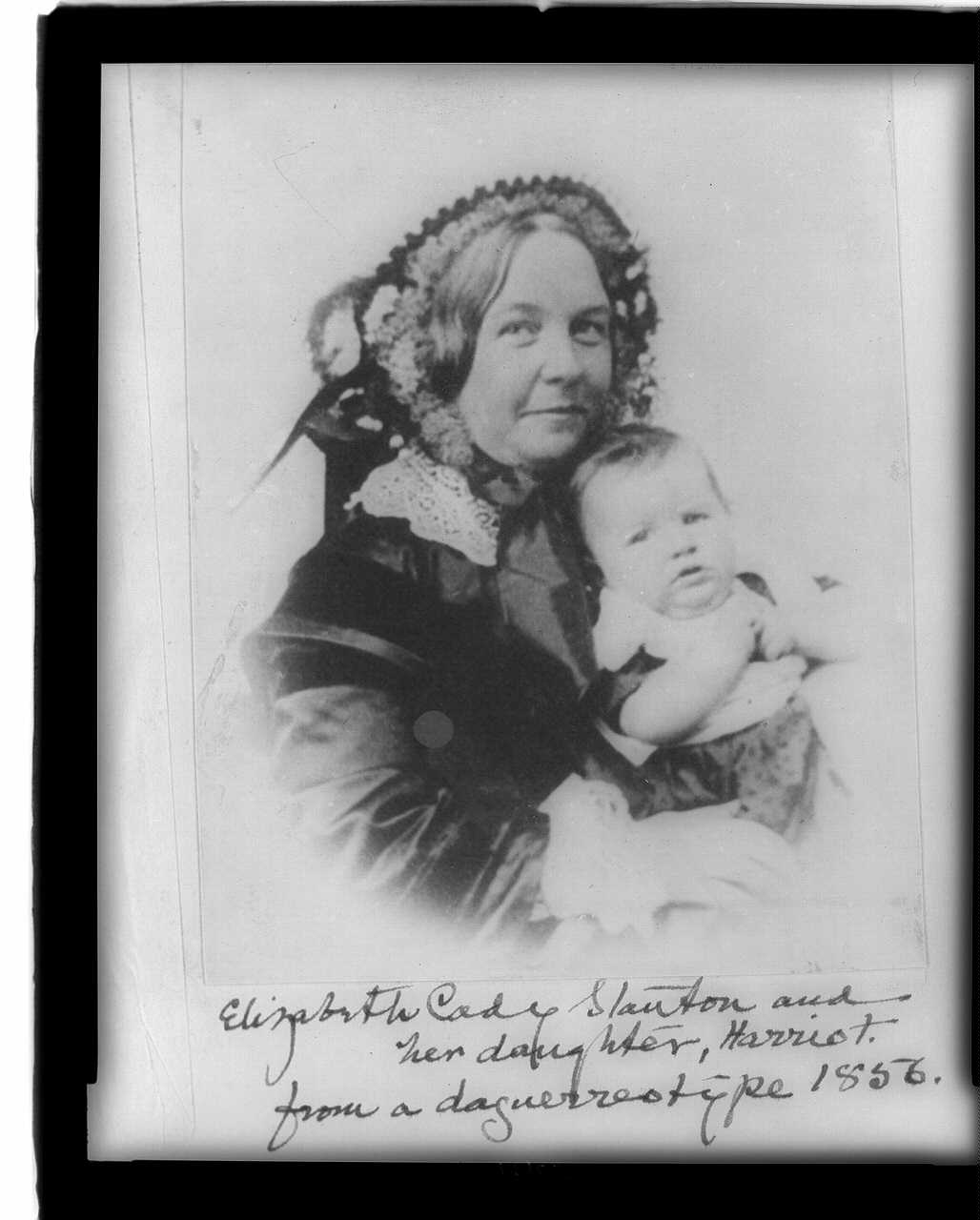
EIizabeth Cady Stanton and her daughter, Harriot. From a daguerreotype 1856

EIizabeth Cady Stanton and her daughter, Harriot. From a daguerreotype 1856
Elizabeth Cady was born in Johnstown, New York in 1815. She was the eighth of eleven children to be born to Margaret Livingston Cady and Daniel Cady, a prominent lawyer. Only 5 survived to adulthood, all girls. Elizabeth was eleven when her last brother, Eleazar, died. Her father was inconsolable. He told Elizabeth, "Oh my daughter, I wish you were a boy!" Elizabeth did her best to replace her brother. She was brave, and would get a good education (at least as good as was available to girls at the time). She came to realize that her goal was not so simple.
On June 12, 1840, Elizabeth attended the World Anti-Slavery Convention with her husband Henry Stanton. Henry was an abolitionist delegate at the convention. Elizabeth was not, though several other American women were. None of the women were allowed to participate. They sat behind a curtain and were allowed to watch and listen, but not add to the discussion. At least one good thing came out of this situation: Elizabeth met Lucretia Mott. Together with three other women they organized the Seneca Falls Convention.
"Born to a lawyer father who taught her how laws could be changed if deemed unjust, she became the leading figure in the early U.S. women's suffrage movement, helping to found the American Equal Rights Association (AERA), which fought for the vote for women and African American men. She saw that without the vote women couldn't change unfair laws. She later became a divisive figure whose racist sentiments led in part to a split in the movement." -David Roberts, Suffragete: The Battle for Equality